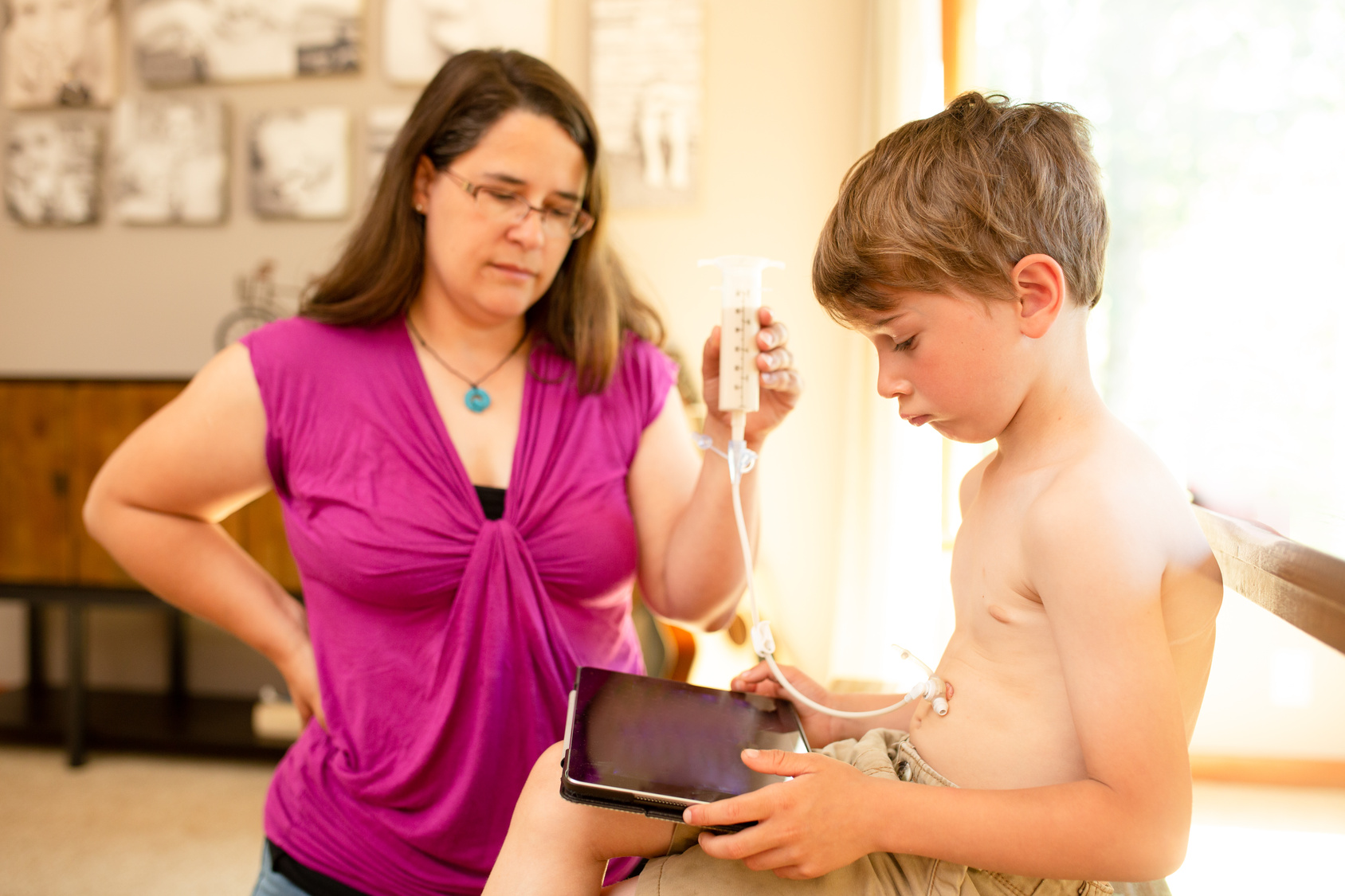For people with feeding tubes, the world is filled with challenges, big and small. From adjusting to the physical realities of tube feeding to navigating the emotional impact of being tethered to a system, these deeply challenging experiences can go unseen by a “tubie’s” wider community.
The stories of people who live with feeding tubes offer us a glimpse into what their daily lives are truly like — both the obstacles and the triumphs. Here, we outline a few of the biggest challenges that people with feeding tubes have to live with every day.

3 daily challenges of tube feeding
Managing constant maintenance
Feeding tubes require continual maintenance to ensure they don’t get infected, yanked out, or otherwise damaged. Each day, tubies must perform care that includes carefully cleaning their tube site and flushing their tube.
They also have to regularly see the doctor who placed their tube, as well as a dietitian and any other healthcare providers involved in tube-related care. Most people with feeding tubes need to have their tube changed out every so often. And if anything goes wrong — such as the tube getting yanked out — that usually means a trip to the ER. And nobody wants this with their busy schedule.
Tubies also must work with their doctor, dietitian, or a home healthcare agency to make sure they have enough formula and enough supplies to properly care for their tube and to run the correct amount of feeds. It’s a lot to remember, and it all needs to be done properly and consistently to maintain the best health possible.
Navigating the emotions of the dinner table
Have you ever wondered what it would be like if you weren’t able to eat? Some people who are tube-fed can still eat by mouth. Others can’t. It all depends on why they have a feeding tube.
Regardless, however, it’s probably safe to say that the majority of people who are on tube feeds have somewhat of a complicated relationship with food.
Food goes beyond the simple pleasure of crunching down on a tart apple or enjoying the savory flavors of a taco — it has major social and cultural significance. Being unable to participate in communal activities such as a meal can easily make you feel detached.
Struggling with mobility
Most tube feeders we have talked with tell us being mobile in their everyday lives is important to them. If you have a feeding tube, you might find that your tube feeding system is limiting your ability to move around, be physically active, and get out of the house.
Tubies can also feel that being attached to a feeding system (whether that’s an IV pole, a pump in a backpack, or something else) for hours at a time is a burden that can bring them down.
The strain of balancing medical equipment with daily activities is very real, with one tubie reflecting “It’s hard to explain to someone how exhausting it can be to carry the weight — physically and emotionally — of always being hooked up.”
These are just a few of the challenges that people with feeding tubes live with every day. For tubies, there’s no off switch — it’s difficult to take a vacation from these physical and emotional issues. These challenges are present 24/7.
Finding freedom through innovative medical solutions
The sense of isolation and limitation expressed by tubies is unfortunately a common thread. Yet so is the incredible resilience of this community. Many people have shared ingenious tips for making feeding systems work with their lifestyles — like finding ways to keep tubing secure and kink-free or using innovative products that help secure feeding bags or syringes to surfaces. These creative solutions show the strength and adaptability of tubies.
Often, tube feeders or their families end up inventing solutions themselves that result in new commercial products being available to many! That’s exactly how Mobility+ began. The founder Tomás was a tube feeder, and experienced all of the feeding pain points personally over many years. This, combined with feedback from other users and physicians experiencing the same pain points, he knew there was a need. So, he set out to develop a solution: an enteral feeding system that is not only functional, but improves quality of life.

Mobility+ is a lightweight, mobile feeding system that you can take on the go. It’s silent and discreet — no whirring motors or blaring alarms like other pumps — and can be worn in our custom multi-way bag as a fanny pack, belt bag, or backpack. Mobility+ doesn’t need electricity to work, so you won’t be tethered to the wall. It’s a breath of fresh air as you gain back some freedom and can go about your daily life much more easily.
We at Rockfield Medical Devices continue to listen to and read stories, insights, and advice shared by people in the tubie community because it helps us understand the types of innovation and support that are needed in this space. To see how our product has positively impacted some of our patients to date, see their stories here and let us know your thoughts.
If you’d like to share your experience or learn more about Mobility+ and how it could fit into your tube feeding routine, reach out to info@rockfieldmd.com. We understand the challenges that come with day-to-day tubie life, and we’re here to listen, learn, and provide support. In short — we’re here for you.
